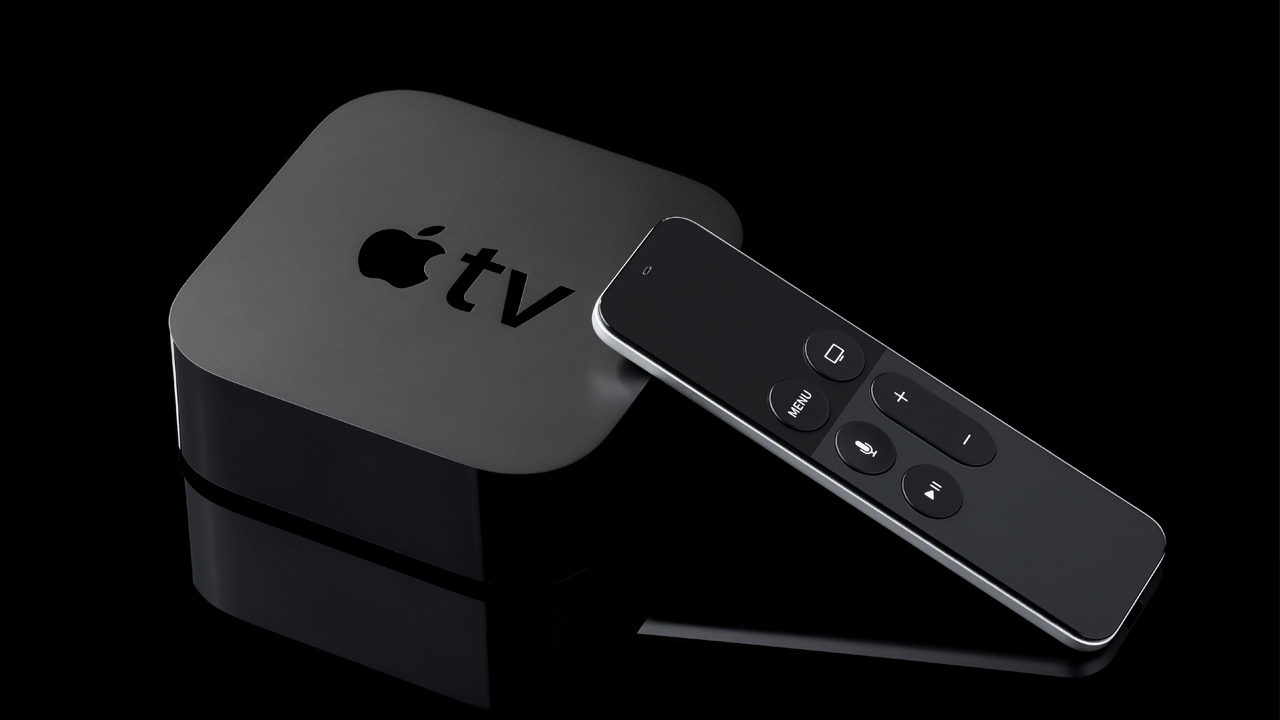Tom's Guide Verdict
The Oppo Find X5 Pro is a fine Android flagship with a still-fresh design and powerful specs. But it merely has very good cameras and features that can’t justify its high price in the face of competition from the Pixel 6, Galaxy S22 or iPhone 13.
Pros
- +
Slick unibody design
- +
Snapdragon 8 Gen 1 performance
- +
Very fast charging
- +
Improved low-light photography
- +
A great display
Cons
- -
Inconsistent photos
- -
A hefty price tag
- -
Not available in the U.S.
Why you can trust Tom's Guide
Starting price: £1,049
Screen size: 6.7-inch OLED (3216 × 1440)
Refresh rate: 1-120Hz, adaptive
CPU: Snapdragon 8 Gen 1
RAM: 12GB
Storage: 256GB
Expandable?: No
Rear cameras: 50MP (f/1.7) main; 50MP (f/2.2) ultrawide; 13MP (f/2.4) telephoto
Front cameras: 32MP (f/2.4)
Battery size: 5,000 mAh
Charging speed: 80W wired, 50W wireless
Size: 6.4 x 2.9 x 0.33 inches (163.7 x 73.9 x 8.5 mm)
Weight: 7.6 ounces (218 grams)
Excitement is a fickle thing. After two generations of Find Pro phones with interesting designs and features, I was hoping the Oppo Find X5 Pro would bring something special to the smartphone table. It hasn’t.
Like many phone makers in 2022, Oppo has chosen the route of iteration, with the shiny new Find X5 Pro looking very similar to the excellent Oppo Find X3 Pro, rather than shaking up the design and features for a new generation. Looking past my disappointment, the Find X5 Pro is yet another impressive flagship Android smartphone that’s well worth your attention.
But you could say the same thing about many of the best phone contenders. Where once Oppo’s Pro phones justified their high prices with killer specs, that advantage has been eroded. Read on to see if the Oppo Find X5 Pro is still a contender for the best Android phones crown, or if its price tag will see it fade into the crowd.
Oppo Find X5 Pro review: Price and release date
The Oppo Find X5 Pro went on sale in March, and is currently available in one model with two colors — Ceramic Black and Ceramic White. That’s unless you live in the U.S. where Oppo’s flagship phones are still not sold.
With a price tag of £1,049 in the U.K. — that roughly converts to $1,390 — the Find X5 Pro costs the same as an iPhone 13 Pro Max and is within spitting distance of the £1,149 Samsung Galaxy S22 Ultra, though Samsung’s phone offers an extra camera and the S Pen. At least, the X5 Pro is £50 cheaper than its predecessor, which is good news.
What’s not so good is how the Find X5 Pro is undercut by a suite of other Android flagship phones with mostly similar specs — think 120Hz OLED displays, a trio of rear cameras, and a Snapdragon 8 Gen 1 chip — notably the £949 Samsung Galaxy S22 Plus, the £849 Google Pixel 6 Pro, and the £799 OnePlus 10 Pro. These are all very good phones that don’t really offer a lesser experience than the Find X5 Pro, yet are much easier on the wallet.
Oppo Find X5 Pro review: Design
Glance quickly at the black Oppo Find X5 Pro and you’ll likely mistake it for its predecessor. The Find X5 Pro has a 6.7-inch display like the Find X3 Pro. And measuring 163.7 x 73.9 x 8.5 mm and weighing 218g, the Find X5 Pro is nearly the same size as the X3 Pro, only a smidgen heavier.
Get instant access to breaking news, the hottest reviews, great deals and helpful tips.
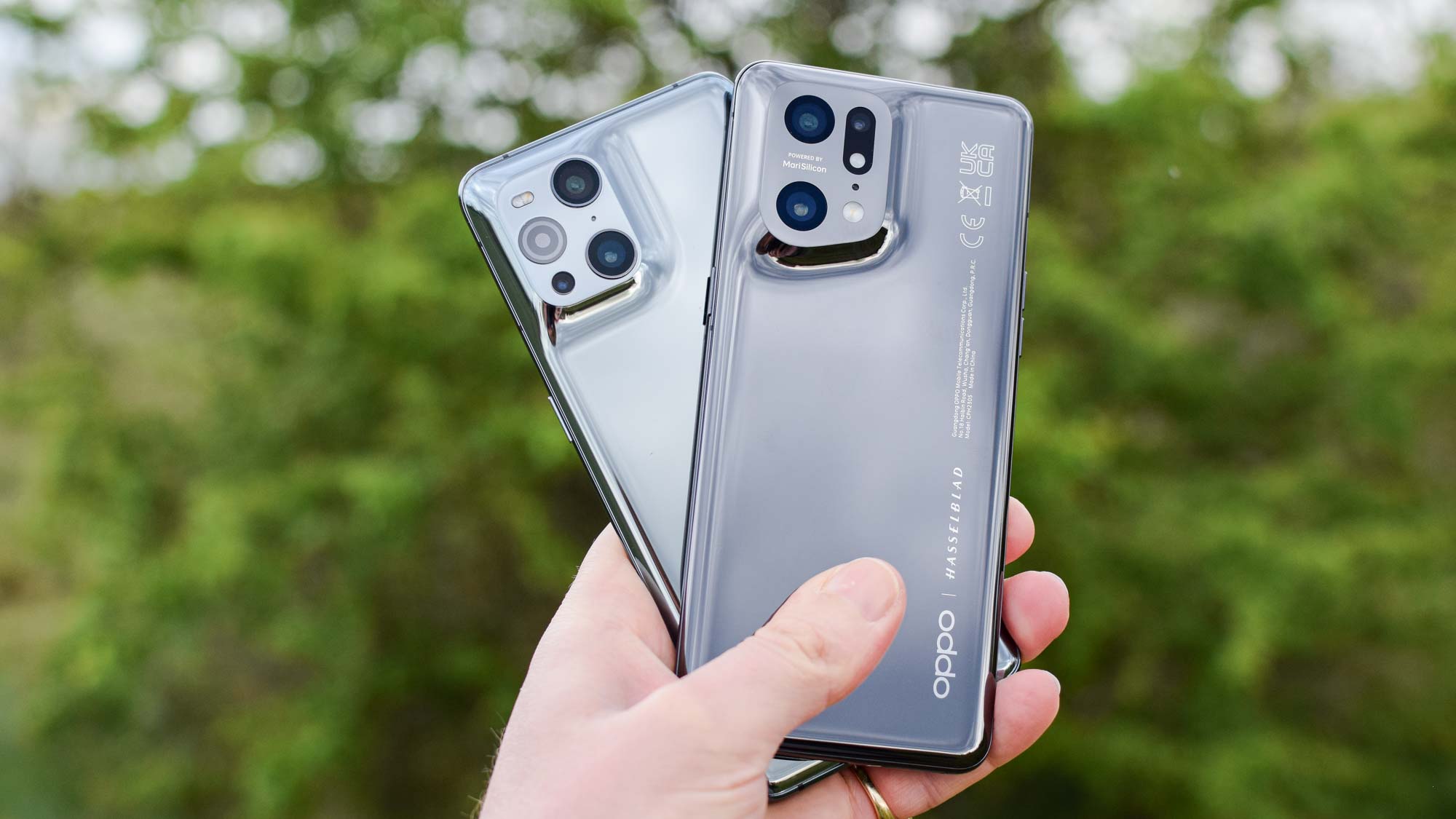
That’s not to say the similar design is at all bad, as the same unibody design that integrates the rear camera into the X3 Pro’s rear is present in the X5 Pro. Only this time, you get an asymmetrical design as the X5 Pro drops back from four cameras to three. Despite this, the overall footprint of what I’ll call the ‘camera blister’ is a little larger than what it was on the X3 Pro.
The X5 Pro’s back panel is now made from a ceramic material rather than glass, which feels a little nicer to the touch. But I’m not sure how well it’ll stand up to scratches and any drops. Given how slippery the Oppo Find X5 Pro can feel, that’s a definite risk. The black model also greedily sucks up fingerprints. So I’d suggest opting for the white option, which I reckon looks nicer and a little fresher; the black mode’s glossy finish means it looks very similar to the shiny blue-gray of its predecessor.
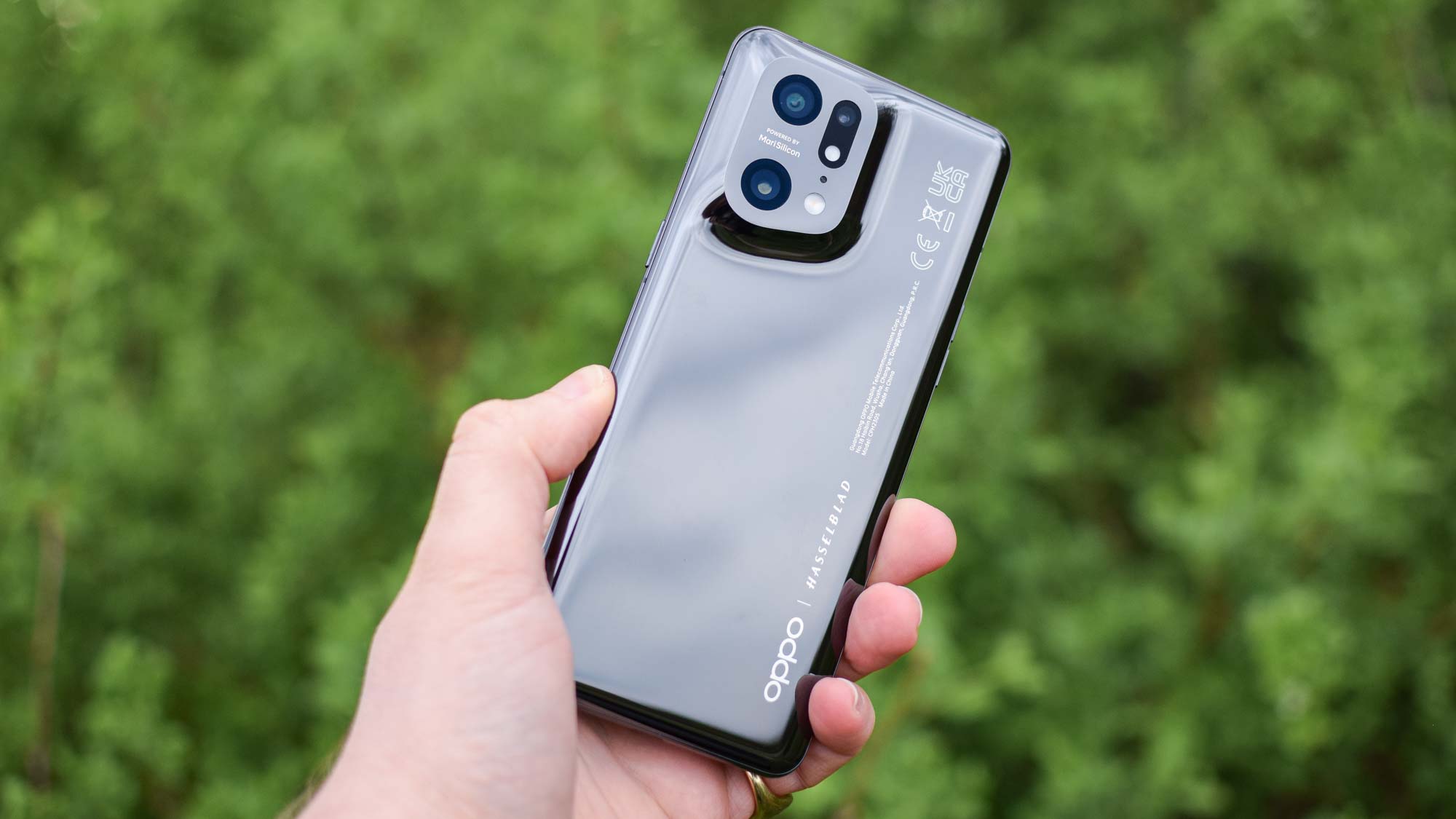
The last notable change to the Find X5 Pro is the under-display fingerprint scanner. It’s moved up more toward the lower center of the display, rather than toward the bottom. It’s a much nicer position that feels more natural to use and is easier to reach without feeling like you’ll lose grip of the phone.
Aside from that, it’s business as usual with the Find X5 Pro. There’s IP68 water and dust resistance, and Dolby Atmos calibrated speakers that sound solid. And overall, the Find X5 Pro remains a lovely-looking phone that’s dead easy to use despite its large display.
Oppo Find X5 Pro review: Display
Much like the design, it’s business as usual for the Oppo Find X5 Pro’s display. Like the X3 Pro, the new phone has a 6.7-inch 3216 x 1440 (QHD+) display, which curves at the edges for a 92.7% screen-to-body ratio.
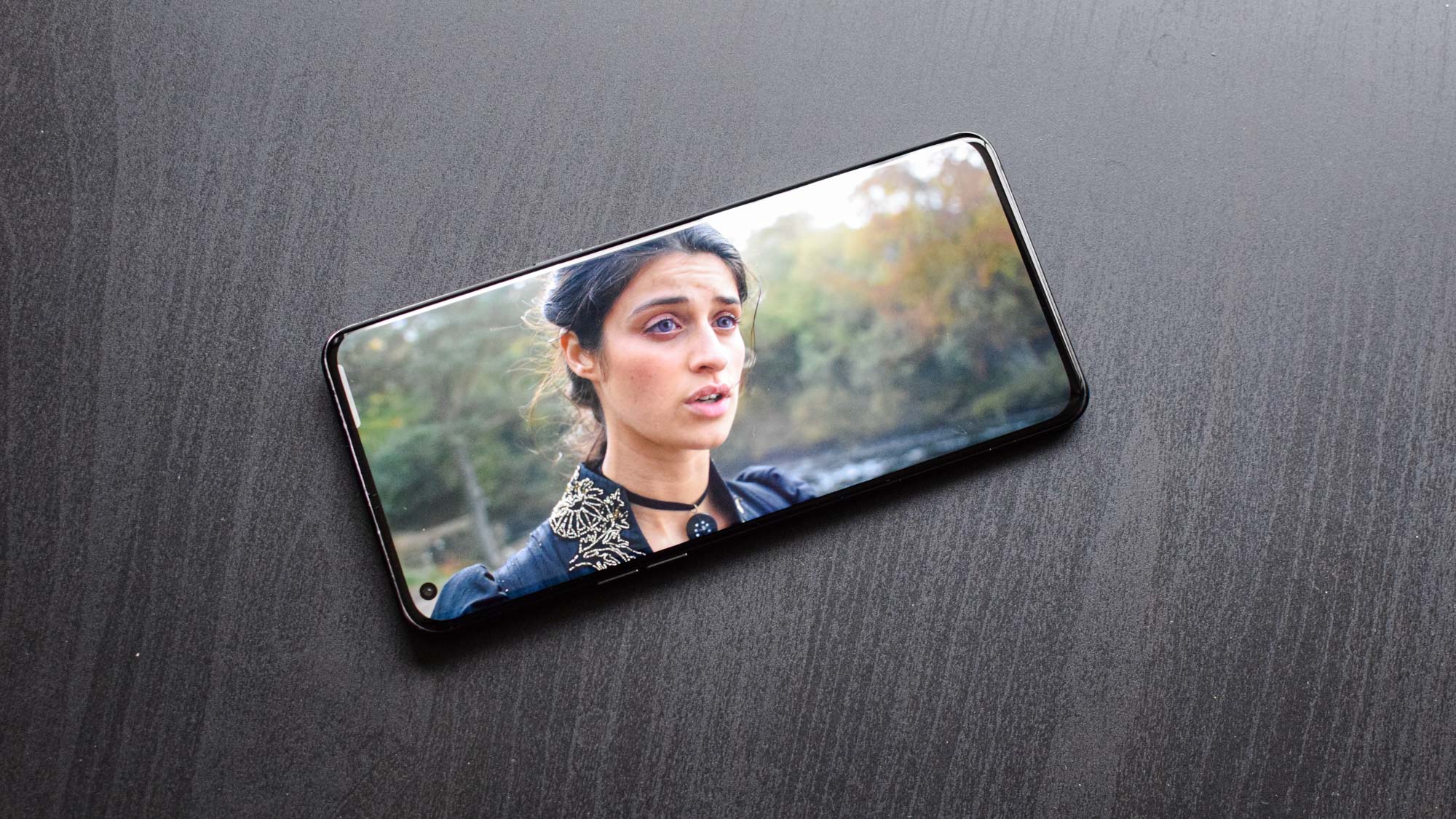
Thanks to new LTPO panel tech, the X5 Pro’s display has a small upgrade: it can now scale from a high refresh rate of 120Hz down to just 1Hz when it’s displaying static content. This should help save on battery life.
Oppo still touts a 10-bit display that can show 1.07 billion colors. While there’s not many apps out there that can really take advantage of this, it’s nice to know the capability is there.
As there’s no U.S model available, I was not yet able to get the Find X5 Pro’s display put through theTom’s Guide lab tests. But that’s a little moot, as the display is, to my eyes, basically identical to that of the Find X3 Pro. So that means a screen able to deliver plenty of color and contrast, with the 525 pixels-per-inch density meaning everything is crisp and clear, especially when QHD+ is enabled; out of the box FHD+ is switched on.
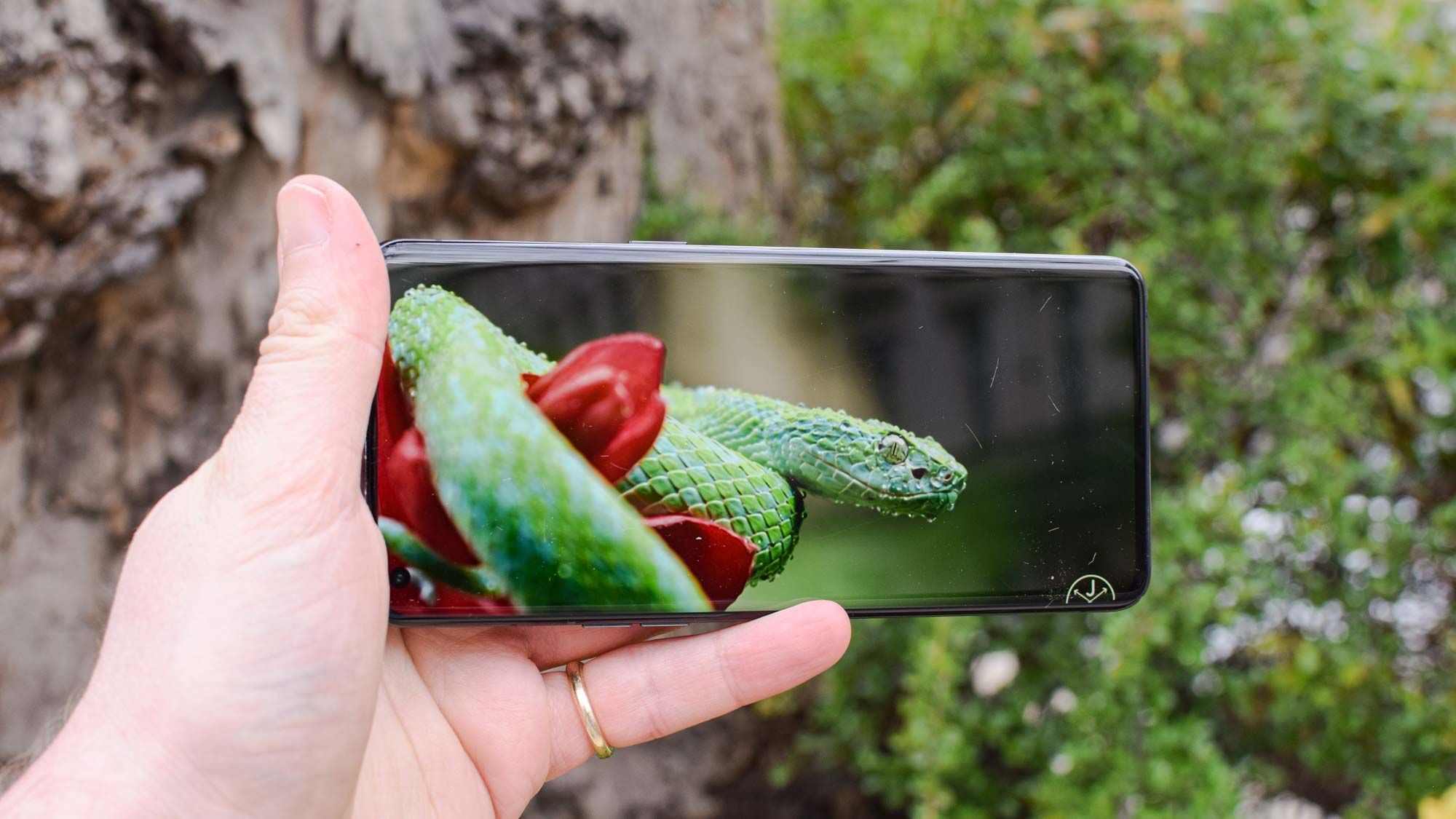
Peak brightness is rated at 1,300 nits, which means the Find X5 Pro’s display is bright enough to see all manner of content in a variety of conditions. It can't quite keep up with the Galaxy S22 Ultra’s 1,750-nit peak brightness, but otherwise the display is great for viewing pretty much anything from flicking through Gmail to gaming on Xbox Game Pass. The screen is very reflective, however, which can be a little tricky when viewing dark scenes in videos or movies.
I’d suggest using the Find X5 Pro’s Cinematic display mode, as it treads the line between balanced colors and movie-correct hues.The default Vivid mode is a little too heavy on color saturation.
Gorilla Glass Victus covers the screen and promises to survive some hard knocks. But I noticed that after a stint in my backpack, seemingly away from anything obviously sharp, that there was a scratch on the screen. This shows that Victus still has some ways to go before it easily wards off scratches.
Oppo Find X5 Pro review: Cameras
Oppo made the interesting decision to drop the microscope camera found on the back of the Find X3 Pro, meaning the Find X5 Pro has a standard trio of rear snappers.
A 50-megapixel camera with an f/1.7 aperture takes care of primary photography duties. It’s supported by a 50MP ultrawide angle shooter with an f/2.2 aperture and 110-degree field of view; there’s also a 13MP telephoto lens with an f/2.4 aperture. If those specs sound familiar, it's because they are the same as the Find X3 Pro.
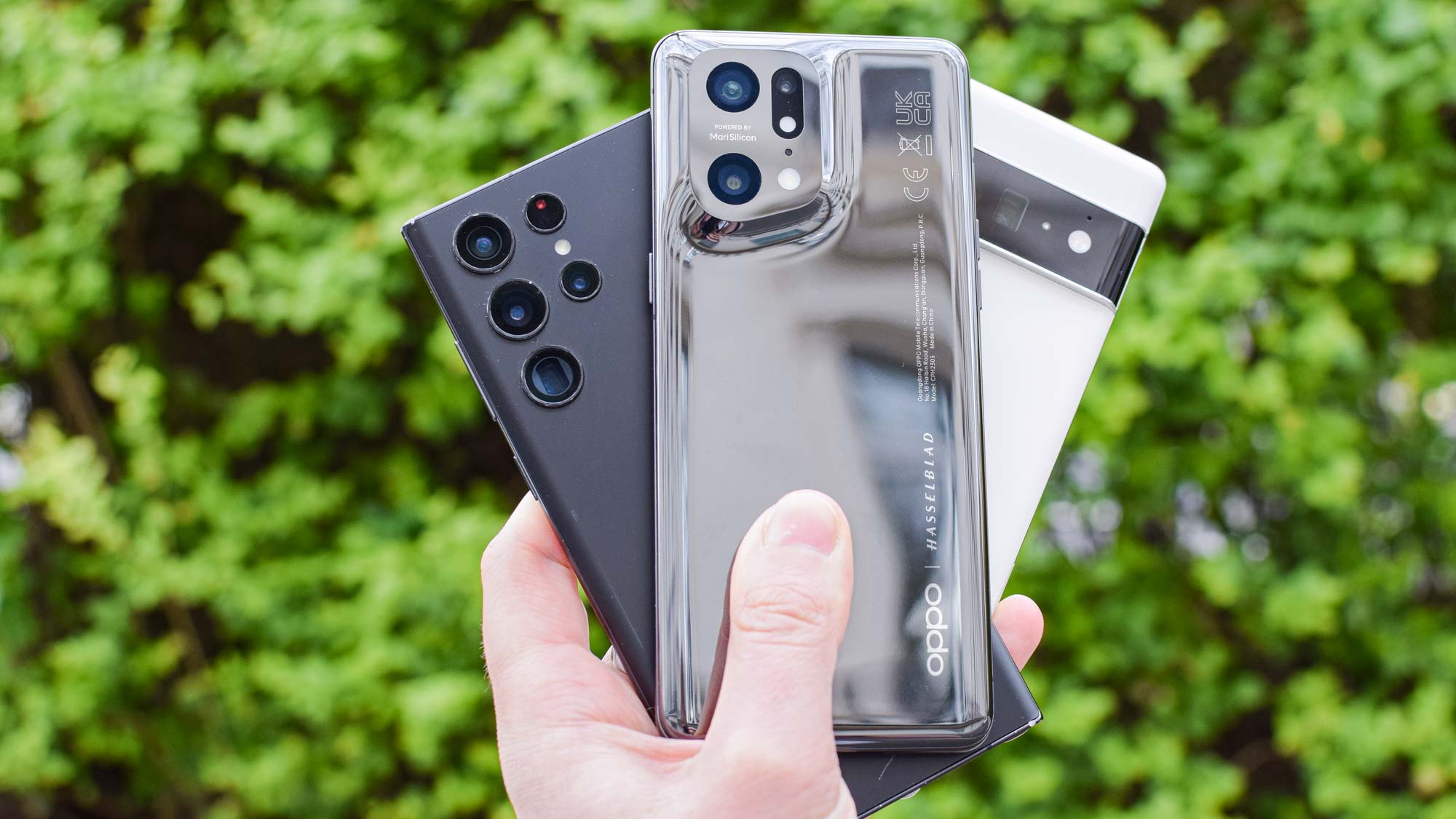
However, Oppo is betting on a new five-axis optical image stabilization system for the main lens, and a brand-new MariSilicon X Imaging neural processing unit (NPU) to aid with computational photography and video, especially in low light.
Starting with the main camera, the Find X5 Pro can trade blows, more or less, with the best camera phones around in a variety of conditions. It does a great job at capturing plenty of detail, brightness and solid dynamic range.
However, the Find X5 Pro does have a tendency to oversaturate colors and go a little heavy on brightness, meaning some shadows get squashed and a little depth in an image is lost. The Find X5 Pro is also rather keen on applying HDR (high dynamic range) processing to shots, which can sometimes make an image look a little over-processed rather than heavy on contrast.
Take this shot which pits Oppo’s phone against the Galaxy S22 Ultra. The Find X3 Pro delivers a photo with punchy colors and plenty of brightness. But I feel it goes a little too far, with the red in the background building’s girders looking a little artificial and the blue paint on the boat to the right appearing a little too bright compared to the S22 Ultra’s rendition.
The same can be seen in this shot of the canal boat. While the Find X5 Pro’s shot is bright and colorful, it over-saturates the red on the boat’s prow, while the flowers and orange lifebuoy are a little washed out by high brightness, which also clips some of the shadow detail. The typical contrast-y look of the Pixel 6 Pro’s shot offers a more nuanced image, with what I feel is a more even exposure.
The ramping up of colors and brightness is made starkly clear in this next photo, with the Find X5 Pro rendering what’s meant to be a deep red on the kayak as a more of a fuchsia.
I also noticed the Find X5 Pro’s photos were a little noisier in bright light than those taken on an iPhone 13 Pro, Pixel 6 Pro or Galaxy S22 Ultra. This wasn’t a problem I really noticed with the X3 Pro, so it could be the quirk of Oppo using its own NPU for the camera system. Given the X5 Pro is still relatively new, I’m hoping software updates can clean up the noise and curtail the overzealous approach to brightness and color saturation.
But on the whole, I reckon the Find X5 Pro’s main camera beats its predecessor, at least in terms of better colors, as you can see in the above photo. But there’s a slight yellow cast to the Find X5 Pro’s shot, whereas the X3 Pro has a bluish tint. This seems to be a bit of a trait of the Find X5 Pro, with some slight color casting in some shots.
Take this photo of the cat, where the Find X5 Pro’s shot looks colorful at first, there’s an overly yellow cast to it, rendering Percy’s fur a little too ginger and the dark green of the wall more of an olive-brown color. In comparison, the iPhone 13 Pro’s shot is more balanced in tone and saturation.
Annoyingly, Oppo seems to have once again forgotten about the rather good 5x optical zoom camera it put on the Find X2 Pro and has stuck with a 2x optical zoom telephoto camera for the X5 Pro. That’s a perfectly serviceable zoom feature, but when the likes of the Galaxy S22 Ultra have at least 3x optical zoom cameras, the X4 Pro feels behind the curve.
And that’s clear in photos. You can see in this zoomed shot that the Find X5 Pro lags behind the 3x camera on the Galaxy S22 Ultra. Samsung’s flagship can not only get in closer, but it delivers a sharper overall image and handles colors well, despite the scene being bathed in bright sunlight. The Find X5 Pro’s zoom photos are still decently clear and not lacking in color, but the S22 Ultra simply delivers the better shot.
Moving onto the 50MP ultrawide angle camera, the Oppo Find X5 Pro does a solid job of delivering expansive, bright and detailed shots. But some of the above issues remain, with the Find X5 Pro being a little overzealous with the brightness leading to colors that get close to being washed out compared to the more neutral Pixel 6 Pro shot.
The higher-than-average 50MP sensor on the Find X5 Pro’s ultrawide camera does occasionally take expansive shots that have a little more detail when you really punch into a photo, notably in low-light.
And that’s where the Find X5 Pro’s MariSilicon starts to make its presence felt. Take a look at the above photo, one on the Find X5 Pro and the other on the Find X3 Pro, both using night mode. The X3 Pro’s photo might be brighter, but it has a distinctly processed look to it. The Find X5 Pro comes out on top, with a darker yet more realistic shot that has significantly less noise; just look at the sign in the pond — its icons are clearer than in the Find X3 Pro’s snap.
The same is true when it gets darker still, with X5 Pro delivering a darker shot than its predecessor, but one that’s not covered in noise.
I also think the Find X5 Pro’s Night mode can stand up against the Galaxy S22 Ultra’s vaunted low-light features. The Galaxy S22 Ultra has a brighter overall photo in our comparison, but the X5 Pro offers better colors and reigns in haloing around light sources. However, in other night photos the X5 Pro’s shot can have a yellow cast to them, which doesn't make for the nicest of tone or the most accurate of colors.
The solid, if unremarkable, camera performance continues onto the portrait mode. The Find X5 Pro snapped a detailed photo of my colleague Richard Priday, while avoiding any over-smoothing of his face or getting his skin tone wrong. There's a warmer tone compared to the Pixel 6 Pro’s more natural look, and Google's phone has slightly better edge detection. On the whole, though, the Find X5 Pro does a good job here.
The same is true with its 32MP front-facing camera. A standard shot of my scruffy looking face does a good job picking out detail in both the side of my face that’s hit by sunlight and the parts in the shadow. Ths Pixel 6 Pro dials back the brightness a bit by comparison and picks out a little more detail in my forehead. But which shot comes out on top is generally a matter of taste.
As for other camera features, Oppo’s Hasselblad partnership appears to have only gone as far as introducing a suite of filter modes, such as Radiance and Serenity and an XPan mode that replicates the panoramic framing of vintage Hasselblad cameras. The latter is fun to use occasionally, but the former filters are things I’m wholly unfussed about. I’d much rather have smarter features like the Pixel 6’s Magic Eraser.
I also miss the Find X3 Pro’s microscope camera. It may have been tricky to use well, but it offered something different for Android phone cameras. I had hoped Oppo would work on improving on the microscope lens, say with a wider focus area, but alas that wasn’t to be.
Overall, the Find X5 Pro delivers a minor upgrade in camera quality over the Find X3 Pro, though that improvement is only really obvious in low-light. And while the trio of rear cameras are very good, they never once produced a shot that wowed me like the cameras on the iPhone 13 Pro or Galaxy S22 Ultra can do. I also found that a lack of consistency with the quality photos the Find X5 Pro served up to be a little jarring; I hope this can be improved with a software update.
Oppo Find X5 Pro review: Video
Video hasn't really changed on the Oppo Find X5 Pro, with it still offering 4K video capture up to 60 frames per second, along with all the features of its predecessor, such as the Cinematic mode that can capture wide aspect ratio video at 4K with HDR while enabling you to fine tune various image parameters.
Standard video is pretty solid, with the five-point image stabilization working well until you move to the telephoto camera or walk on some rough ground. And image quality is good, with plenty of detail.

But like the photos, the improvements come in lower light with the X5 Pro’s MariSilicon doing a much better job than the Fnd X3 Pro at noise reduction and smoothness in low-light 4K video recording. However, it’s not a match for the iPhone 13 Pro, which pretty much remains the smartphone video king, with low light shooting looking natural, steady and clear.
Oppo Find X5 Pro review: Performance and software
Armed with a flagship-grade Qualcomm Snapdragon 8 Gen 1 and supported by 12GB of RAM, the Oppo Find X5 Pro has plenty of performance that it can tap into.
Running Geekbench 5 on the Find X5 Pro, I recorded a score of 961 in the single-core test while hitting 3,359 for the multi-core score. These numbers lag behind the Galaxy S22 Ultra, which uses the same Snapdragon chipset. They’re also behind the iPhone 13 Pro Max (not surprising, since that’s the best performing phone we’ve tested) and the Tensor-powered Pixel 6 Pro (which is a bit of a surprise). In fact, the X5 Pro’s results are barely higher than the Find X3 Pro’s scores.
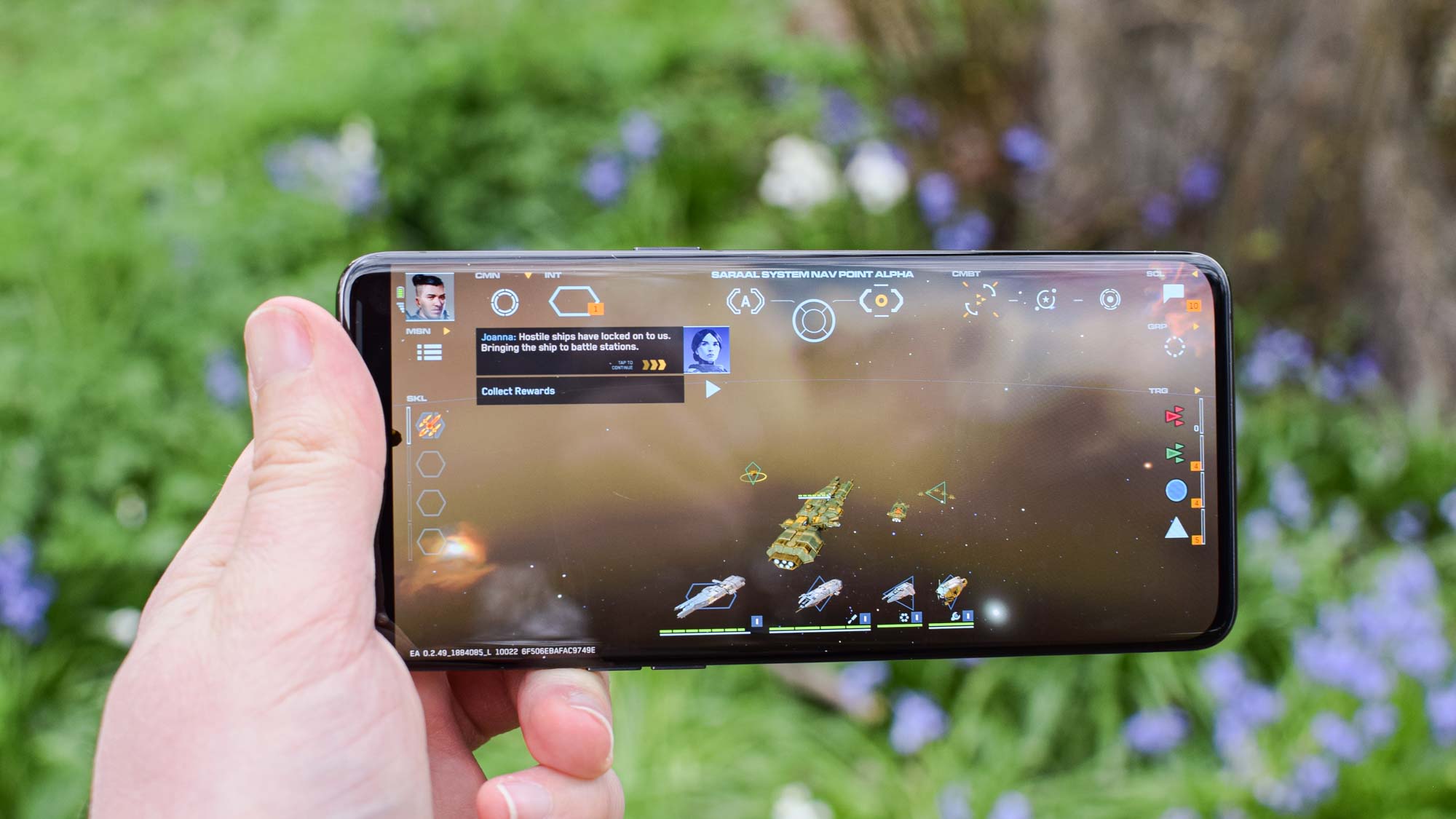
But I think that doesn't matter one bit. I’ve not really encountered anything that bothered the old Snapdragon 888 chip, let alone its successor. So unsurprisingly, the Find X5 Pro will chew through anything you can throw at it.
To double check this, I threw 3DMark’s Wild Life graphics benchmark at the Find X5 Pro’s silicon. It managed an average frame rate of 53.5 fps, and in the Extreme test it averaged out at 14.8 fps. Those numbers are better than what we saw from the Pixel 6 Pro, even if they lag behind the Galaxy S22 Ultra and iPhone 13 Pro Max. But again, you’ll struggle to find a game or graphics-heavy app that’ll tax the Find X5 Pro.
So if you're after a gaming phone that’s not festooned with ostentatious slashes and design flairs, the X5 Pro could be a candidate. Given there's a game mode as part of ColorOS for limiting app notifications while you’re playing and optimizing performance, you’re expected to game on the Find X5 Pro. And with features like the Q1 Ultra Vision Engine to enhance video resolution or HDR performance, the X5 Pro is also a phone for watching the best Netflix shows while on a dull commute.
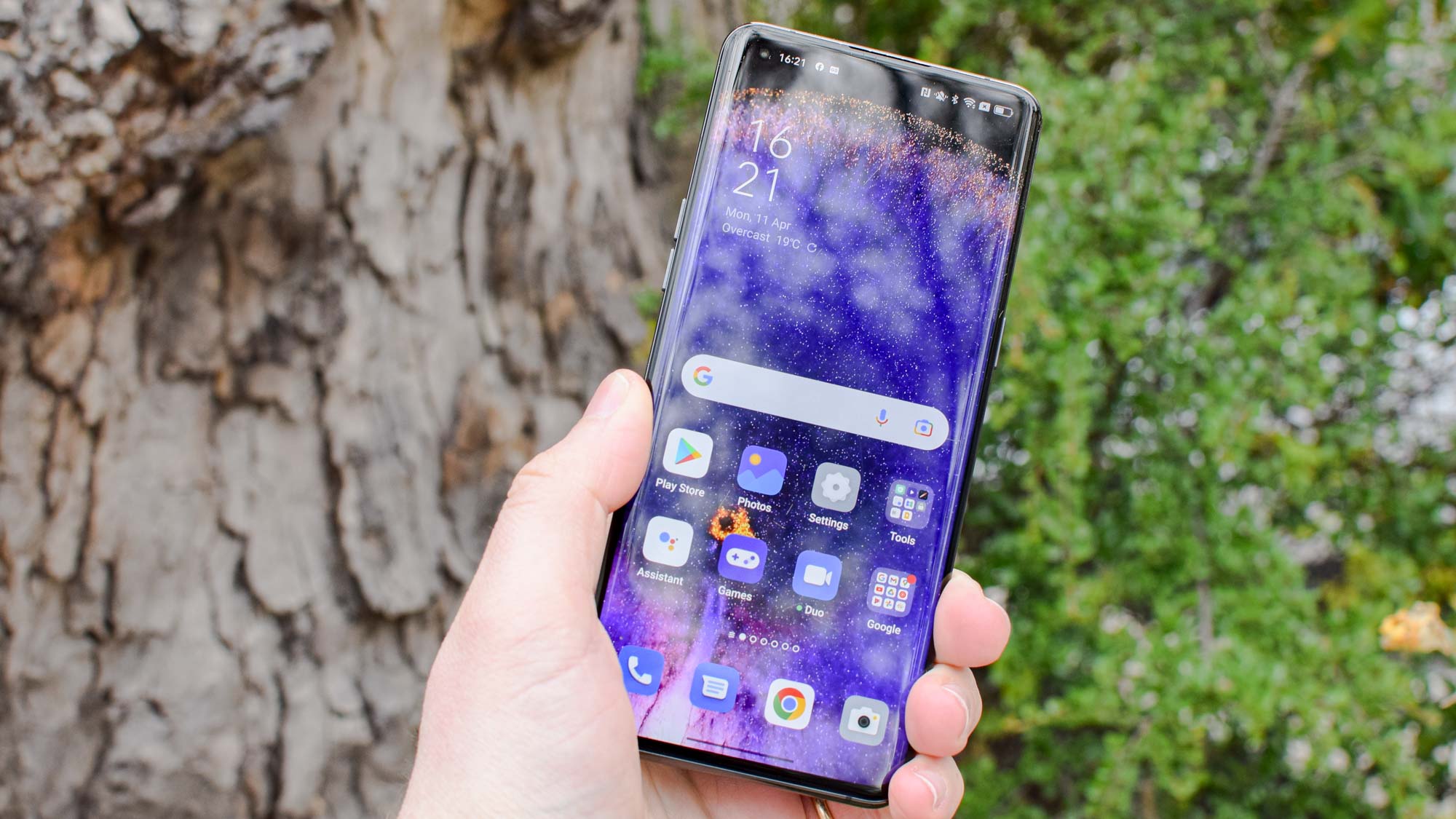
But the main appeal of ColorOS, now in version 12.1, is twofold. For a start, it feels gloriously slick, with snappy animations and a responsive touchscreen thanks to a claimed 1,000Hz sampling rate. It also rarely gets hung up on things and I’ve not encountered any obvious bugs.
Customization is the second major boon of ColorOS, as it enables you to tweak the phone’s look and settings to your heart’s content. With Android 12’s Material You design integrated into ColorOS, you can also have the Find X5 Pro adjust some of the colors of ColorOS to adapt to the wallpaper you’ve selected. And there’s the scope to change the look of app icons across the system, as well as set up a custom always-on display.
There are a few pre-installed apps to contend with on the Find X5 Pro, but these tend to stay out of the way once you're done with an initial setup. And I’ve come to regard ColorOS as one of my favorite non-Google takes on Android.
Storage only comes in a 256GB, with no expansion slots. That’s fine for me, but an option for a 512GB model would have been appreciated.
Oppo Find X5 Pro review: Battery life and charging
Without the lab at hand, I’ve had to do my own testing to see how long the Oppo Find X5 Pro’s 5,000 mAh battery would last. So setting the display’s brightness to the midpoint and at its default FHD+ resolution, then activating Do Not Disturb mode while leaving everything else as it was, I threw a 10-hour-long YouTube video at the phone. When I finally noticed the video had stopped, the Find X5 Pro’s battery had dropped from 100% to 32%, outlasting the video. From that I can glean the Find X5 Pro will deliver a good day of solid use; I’m talking some 6 hours of screen-on time.
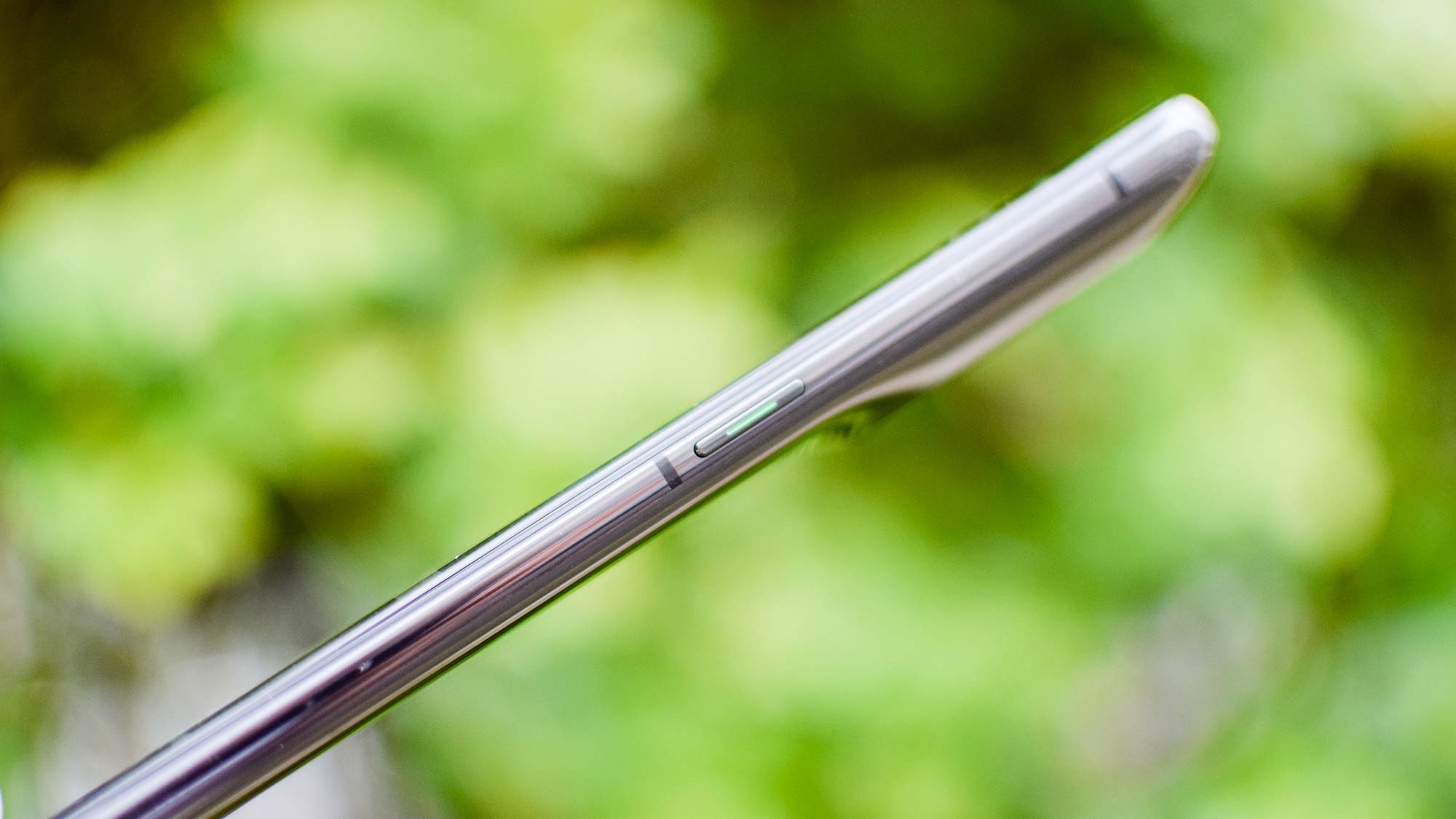
Comparatively, the Find X3 Pro with its 4,500 mAh battery lasted 9 hours and 59 minutes before giving up the electrical ghost, when tasked with continuous web surfing at 150 nits of screen brightness over 5G. While I can't directly compare this lab result against my own test, from using both phones I reckon the Find X5 Pro offers the better battery life, likely benefitting from efficiency improvements touted by the Snapdragon 8 Gen 1 chip.
It’s hardly a chore when the Find X5 Pro’s battery gets low, as it now has 80W SuperVOOC charging. That’s a boost over the Find X3 Pro’s 65W charging. Oppo claims the Find X5 Pro will charge from zero to 50% capacity in just 12 minutes, and I don’t doubt that as the phone fills up very quickly.
But I don't really feel the extra wattage of the charger is that noticeable, as the Find X5 Pro charges very fast on the older 65W charger. I feel that we’re getting to the point of diminishing returns when it comes to upping the wattage for rapid charging. And I raise my eyebrow a little at what such rapid charging could do to the long-term health of a Lithium-ion battery. Yet I won’t deny that being able to very quickly fill your phone’s battery from empty to a usable amount in mere minutes is a great feature.
Wireless charging has now been upped from 30W to the new 50W AirVOOC, which can juice up a battery to 100% in 47 minutes. You will need a proprietary wireless charger to take advantage of that feature, though. Reverse charging sticks at 10W.
Oppo Find X5 Pro review: Verdict
Taken in isolation, the Oppo Find X5 Pro is a fine flagship Android phone. While I wasn’t blown away by the Find X5 Pro’s cameras, they are still very good. And the combination of powerful performance, a gorgeous display and still-fresh design makes the Find X5 Pro rather appealing.
But such phones don’t exist in a vacuum, with the flagship competition being ever-more fierce. For starters, I don’t think the Find X5 Pro offers enough of an upgrade for people with the Find X3 Pro, especially when it comes to design and features. Equally, I feel the X5 Pro doesn't do enough to stand out from its rivals, which have broadly comparable specs, especially given the price Oppo wants people to pay.
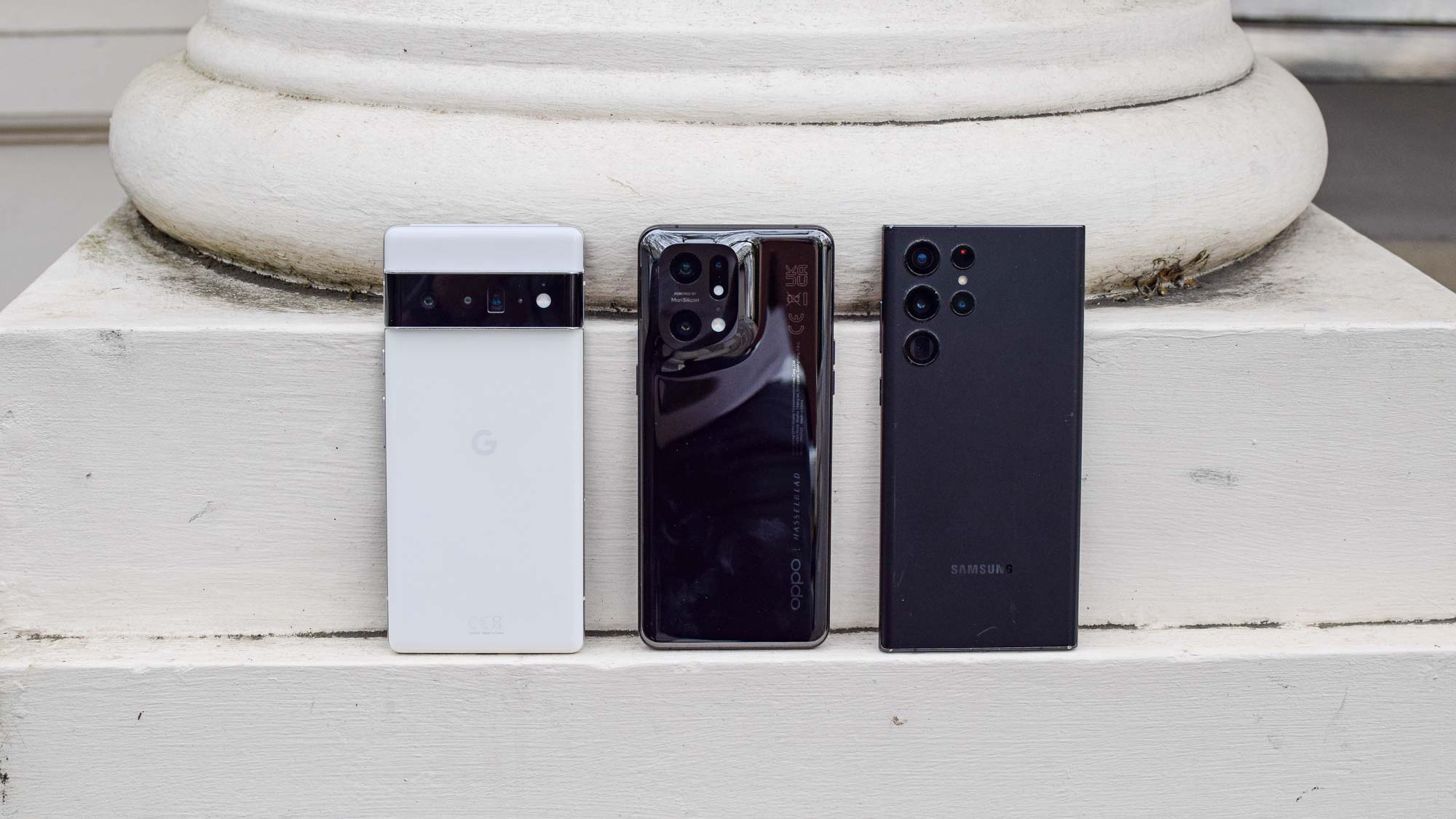
The Pixel 6 Pro is smarter with great photography performance. The iPhone 13 Pro Max is more consistent with class-leading video. The Galaxy S22 Ultra is more feature packed and has that standout Note-design. If it was my money, I’d choose Google’s phone.
That said, if you’re a ColorOS fan or want something different from the Apple, Samsung and Google phones — and you can swallow the high asking price — I doubt the Oppo Find 5 Pro will leave you disappointed.

Roland Moore-Colyer a Managing Editor at Tom’s Guide with a focus on news, features and opinion articles. He often writes about gaming, phones, laptops and other bits of hardware; he’s also got an interest in cars. When not at his desk Roland can be found wandering around London, often with a look of curiosity on his face.

